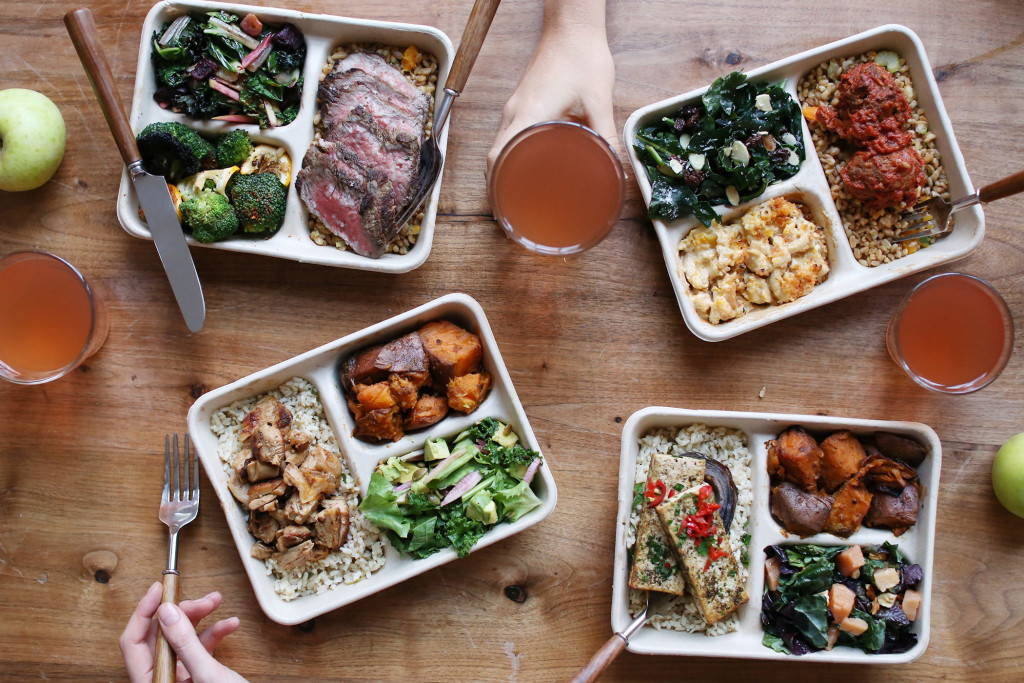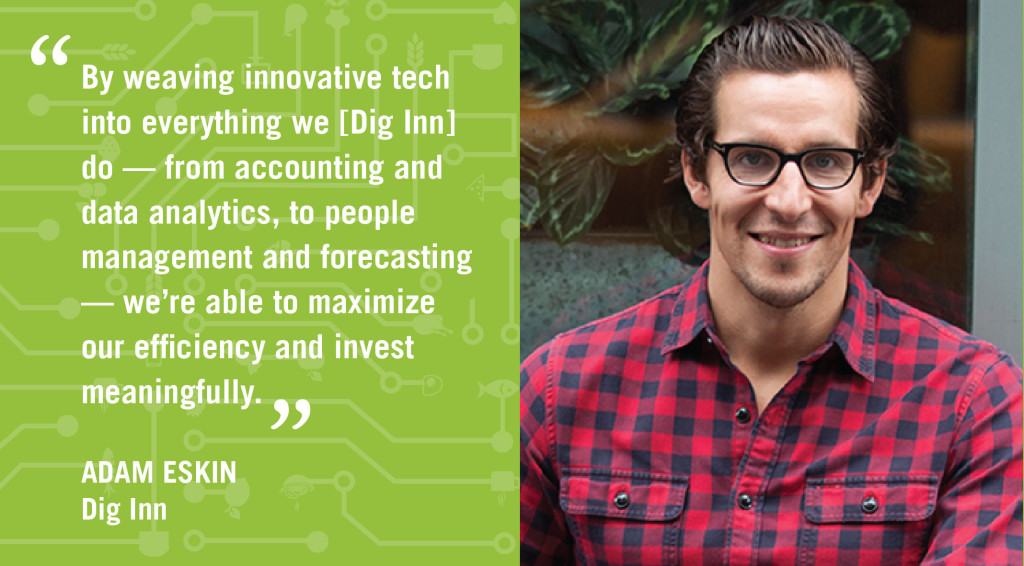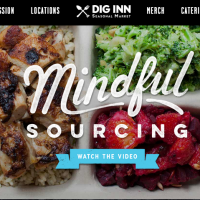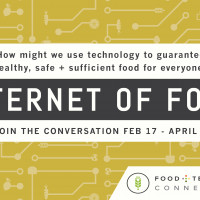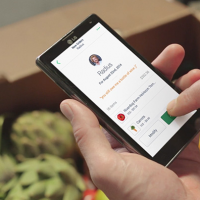Guest post by Adam Eskin, Founder of Dig Inn. The views expressed here are solely those of the author and do not reflect the views of Food+Tech Connect.
When I was a teenager in the 90’s the future of food seemed obvious. America’s health was in pretty bad shape and the only answer to the crisis was more nutrients. Whole foods like blueberries and eggs were being pushed off shelves by their more sophisticated cousins—antioxidant pills and protein bars. All signs pointed to a single outcome that relegated ‘food’ as old-fashioned and out of touch. It’s hard to imagine poor old plain food could ever hold its own in the ring with test-tube raised super tonics.
But there is an alternative food future, and it’s one we’re fighting for at Dig Inn. We believe dining like our terribly archaic grandparents did — on an array of real ‘food,’ mostly vegetables, made from scratch — is the way forward. Each day at Dig Inn, we’re faced with a seemingly incongruous challenge: how do we implement technology that encourages as much regression, as it does progression?
Adopting holistic software systems is the only way we can ensure a significant impact on the food system. By weaving innovative tech into everything we do — from accounting and data analytics, to people management and forecasting — we’re able to maximize our efficiency and invest meaningfully. Streamlining these processes, particularly in our supply chain, means we’re able to provide greater access to healthy, vegetable-forward food, while spending more on our people and partners.
Our restaurants serve seasonal American food, sourced from over thirty farmers and partners located as close to home as possible. The depth and breadth of our relationships grows with each season that passes. Now more than ever, our menus are being designed around genuine conversations with our farmers. The paradox is that these old school human relationships are actually enabled by technology.
Forecasting, menu performance analytics and planning and inventory management tools help us accurately predict our needs and the needs of our partners, which allows us to develop mutually beneficial menus. Weather and environmental tools help our purchasing team inform the R&D process; we can accurately convey our needs to producers, and in turn, they can account for us in their crop planning. Our sourcing model relies on an open exchange of information about volume, supply, quality, timing and logistics. By mitigating distribution associated risks, our farmers can rely on consistent business, and we can have a secure supply of ingredients.
Less time spent crunching numbers also gives us more time in the field helping our farmers sustainably scale their operations. Multi-tier technology can overcome some key challenges of traditional farming—like harsh weather conditions, seasonality, retail and distribution, and predictability. By combining proven agricultural methods, relying on photosynthesis and crop diversity, with innovations in farm design, costs of production can be dramatically lowered. Conversely, the outcome is a greater profit margin for farmers, and increased access to healthy, safe, and sufficient food for our consumers.
From paddock to plate, our ‘old-fashioned’ business model hinges on modern technology. And if that means we’re sitting at the table with your grandma, that’s fine by us.
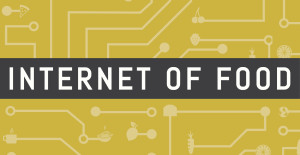 Internet of Food is an editorial series exploring how we might use technology, new business models and design to guarantee healthy, safe and sufficient food for everyone. Join the conversation between March 23 and April 29. Share your ideas in the comments, on Twitter using #internetoffood, Facebook, Instagram or LinkedIn, and follow the conversation by subscribing to our newsletter.
Internet of Food is an editorial series exploring how we might use technology, new business models and design to guarantee healthy, safe and sufficient food for everyone. Join the conversation between March 23 and April 29. Share your ideas in the comments, on Twitter using #internetoffood, Facebook, Instagram or LinkedIn, and follow the conversation by subscribing to our newsletter.
________________
 Adam’s passion for the food industry grew after two somewhat cliched encounters—a visit to an asparagus farm, and a poignant reading of Michael Pollan’s The Omnivore’s Dilemma. From both, he developed a set of standards that would continue to guide his work at Dig Inn. Adam’s dedication to culinary excellence and sustainable sourcing is central to his business model.
Adam’s passion for the food industry grew after two somewhat cliched encounters—a visit to an asparagus farm, and a poignant reading of Michael Pollan’s The Omnivore’s Dilemma. From both, he developed a set of standards that would continue to guide his work at Dig Inn. Adam’s dedication to culinary excellence and sustainable sourcing is central to his business model.
Prior to his foray into the restaurant business, Adam graduated Magna Cum Laude with a BA in Business Economics from Brown University, before working in finance at Wexford Capital and Merrill Lynch. When he’s not working, Adam can be found at yoga, thai boxing, or on an occasional weekend sojourn upstate with his family.

